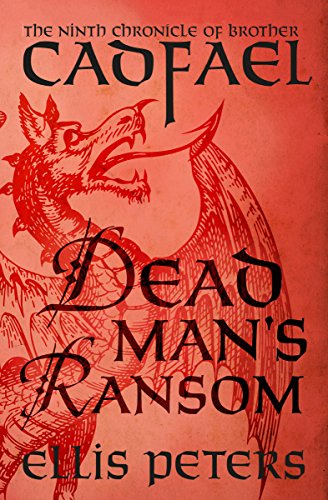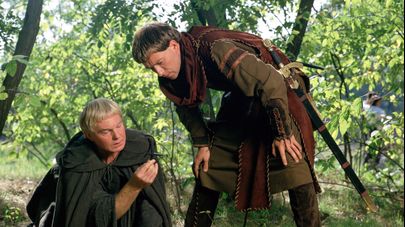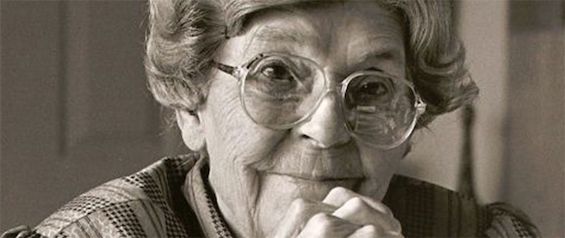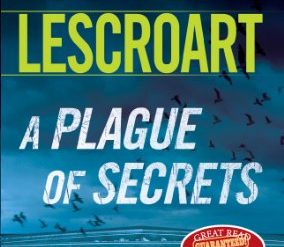
Brutal, face-to-face warfare rages across the English countryside in 1141, as the ninth of the Cadfael Chronicles mysteries opens. But the life-or-death struggle over the throne between King Stephen and the Empress Maud has reached a climax. At Lincoln, in the northeast, Maud’s forces have captured the king. But for the people of Shrewsbury, near the border with Wales in the far southwest, there is even more troubling news. And Brother Cadfael of Shrewsbury Abbey finds himself embroiled in the fallout.
Estimated reading time: 6 minutes
The problem is grave. Sheriff Gilbert Prestcote was wounded in the Battle of Lincoln and carried off to Wales a captive by a renegade band of tribesmen. Gilbert’s aide, the able Hugh Beringar, must now somehow assert his own authority over the shire. “He was the sole lord of a county now, holding and garrisoning it on the behalf of a king in eclipse.” And now news arrives that the Welshmen have crossed the border again to the south and laid waste to the farms and villages close to a Benedictine nunnery that is sister to Shrewsbury Abbey. As Hugh musters men to drive the Welsh from the shire, Cadfael joins the acting sheriff in a scheme to bring the sheriff back from Wales in a prisoner swap.
Dead Man’s Ransom (Cadfael Chronicles #9 of 20) by Ellis Peters (1984) 288 pages ★★★★☆

The Cadfael Chronicles mysteries illuminate a little-known time
Most of us have a distorted view of life in medieval England. The very word medieval conjures up frightful images. People dying in droves from deadly diseases. Bands of brigands murdering travelers along the roads. Lords raping peasant girls. Of course, it’s true that the period from around 500 to 1450, a widely accepted definition of the medieval era, was a violent time. But at no time does the phrase “dark ages” reflect the reality. And especially after the turn of the second millennium, England entered a brighter era. Food production increased. The country’s population began to grow. And more thoughtful people started questioning the dogma—and the corruption—of the Church. But of course there were major stumbles along the way. The period in English history known as “the Anarchy” (1138-1153) was one of those stumbles. And that is the time in which the Cadfael Chronicles mysteries are set.
These charming and mostly short novels sport a writing style that conveys the character of the age. Ellis Peters’s syntax and vocabulary seem archaic at a casual glance. But her prose flows smoothly. And she has paid her dues in research. The books faithfully reflect the known historical facts.
Little-known facts about life in 12th-century England
The Cadfael Chronicles mysteries are novels, not history books. To read them it helps to know some of the things that Ellis Peters, out of concern to keep her stories flowing, doesn’t explicitly note. Here are three of the most significant ones that come to mind . . .
A sheriff was not just a lawman
In England in the Middle Ages, the sheriff was a nobleman appointed by the king as the chief administrator of a county, or shire. He was a lord, whose writ was unchallenged in his domain. Yes, he served the function of the shire’s top official in the criminal justice system. But he was both prosecutor and judge. And as a nobleman he was almost always of Norman, not Anglo-Saxon, heritage, and thus automatically commanded respect. After all, the Norman Invasion of England preceded the time of the Cadfael Chronicles mysteries by less than a century. The country was now trilingual, with French spoken among the Norman elite, Latin within the Church, and what we know today as Middle English spoken by everyone else. Peters doesn’t introduce the complications to her stories that translating from one of these languages to another would entail. (Nobles rarely spoke English, and peasants and townsmen were unlikely to know French.) Of course, dialogue in the novels involving Welsh and English-speakers does respect the language barrier. Few on either side of the border spoke the the other’s tongue.
Medicine was surprisingly good
Brother Cadfael runs the apothecary for Shrewsbury Abbey, tending to the crops of herbs and administering them to treat illness and wounds. Recent research has shown that such medicine in the Middle Ages—even in backward England—was surprisingly effective. (Other societies, chiefly Arab, Chinese, and Indian, were more advanced.) So, when Peters portrays his remedies as always effective, she exaggerates only slightly.
Medieval armies were tiny
There are frequent references in both fiction and nonfiction to the “armies” of the two warring forces during the Anarchy. But the term is misleading from a modern perspective. At the time of the Battle of Hastings, when Duke William of Normandy defeated the Anglo-Saxons, the two contending forces may each have numbered between five and seven thousand men. To put that in perspective, that’s about half the size of a single division today. (Divisions tend to vary from 10,000 to 20,000 men from one army, and one specialized function, to another.) By contrast, in the largest battle ever fought—Operation Barbarossa, when the Nazis invaded the Soviet Union in 1941—the two opposing forces were massive. On the German side, 174 divisions totaling 4.2 million men. For the Soviets, 228 frontline divisions numbering 2.8 to 2.9 million. Barbarossa was an outlier. But hundreds of thousands or millions of soldiers also fought in many other World War II battles and even a few in the Korean War.
About the author

Ellis Peters (1913-95) was the author of the twenty novels in the Cadfael Chronicles as well as an award-winning series about a modern family, among dozens of other works. She was born and lived in southwest England, and it is there that the Cadfael books were set. Ellis Peters was one of several pen names for Edith Mary Pargeter. She wrote actively from the 1930s to the 1990s.
For related reading
I’ve reviewed all eight previous novels in the Cadfael Chronicles. To access those reviews, go to the Home Page and type the name “Cadfael” in the search box. And be sure to check out Good books about the Middle Ages, too.
You’ll find lots of other great novels in this genre at 20 most enlightening historical novels and Top 10 historical mysteries and thrillers. Included in the latter is a list of titles and links to my reviews of all eight previous books in the Cadfael Chronicles.
You might also enjoy my posts:
- Top 10 mystery and thriller series
- 20 excellent standalone mysteries and thrillers
- 30 outstanding detective series from around the world
- Top 20 suspenseful detective novels
And you can always find my most popular reviews, and the most recent ones, on the Home Page.


























